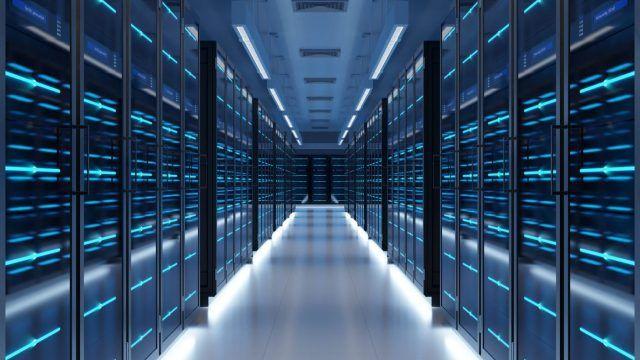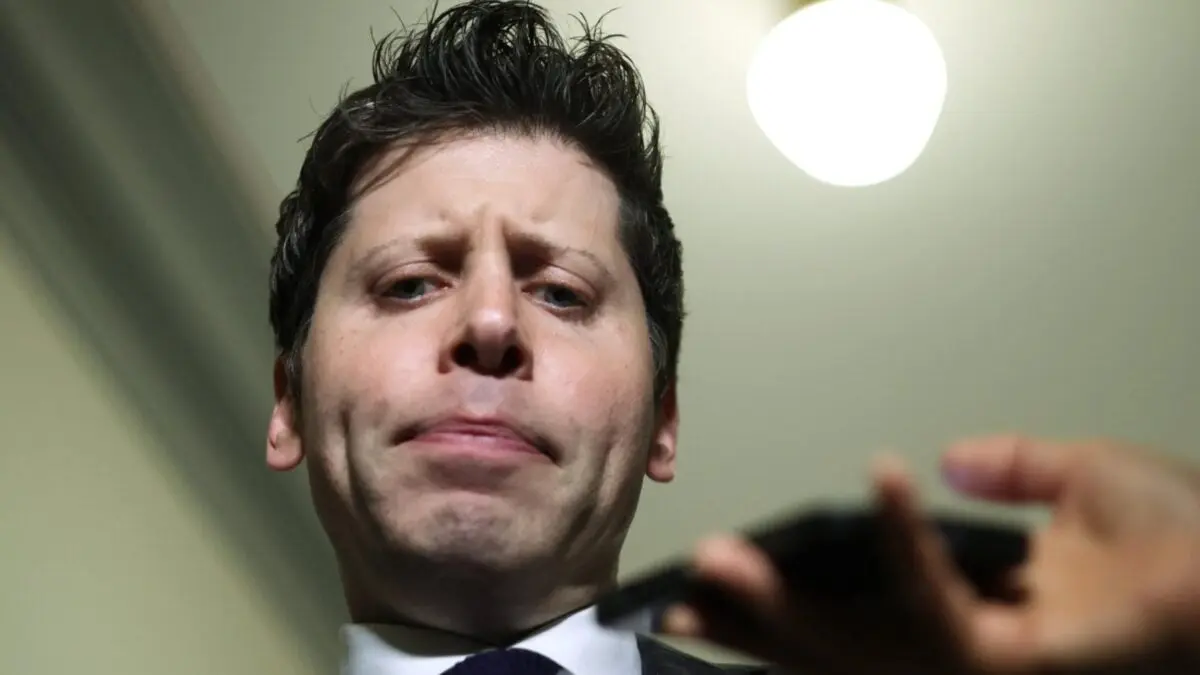Trump Administration Proposes Fast-Track Grid Connection for AI Data Centers
3 Sources
3 Sources
[1]
New Trump Administration Energy Rule Would Enable Data Centers with 'Large Loads'
Data centers are being built with unprecedented gusto all over the U.S. The reason for this is fairly well known: the AI business requires gargantuan amounts of electricity and computing power. Every time you use an app like DALL-E to, say, make one of those dumb AI-generated images of Mickey Mouse committing the 9/11 terrorist attacks, you're apparently using as much energy as it takes to charge an iPhone. Now picture how much electricity is being used if millions of Americans do it at the same time. The Trump administration has made it known that it's a friend to the AI industry (it recently launched the AI infrastructure initiative Stargate) and so, it makes perfect sense that its Energy Secretary, Chris Wright, has decided to cut the red tape when it comes to hooking data centers up to the electrical grid. In a statement published Friday, the Energy Department announced its plan to amend current rules to allow organizations that consume a lot of electricity to connect to the grid much faster: "U.S. Secretary of Energy Chris Wright directed the Federal Energy Regulatory Commission (FERC) today to initiate rulemaking procedures with a proposed rule to rapidly accelerate the interconnection of large loads, including data centers, positioning the United States to lead in AI innovation and in the revitalization of domestic manufacturing." Hear that, guys? Chris Wright is apparently such a big fan of large loads that, in a bout of deregulatory fervor, he's now helping to usher in a new era of easier data center connection. While the specifics of Wright's proposed rule are a little bit complicated, the obvious takeaway seems to be an effort to make the regulatory process less onerous on people who want to hook up a lot of servers to the grid. The Register notes that one proposed rule is to "limit the time taken to review connection decisions to 60 days," ostensibly so applicants don't get bogged down in a lengthy review process. In a letter about the proposed rule change published to the government's website, Wright wrote: "To usher in a new era of American prosperity, we must ensure all Americans and domestic industries have access to affordable, reliable, and secure electricity. To do this, large loads, including AI data centers, served by public utilities must be able to connect to the transmission system in a timely, orderly, and non-discriminatory manner. This is an urgent issue that requires prompt attention." He added: "This Administration is committed to revitalizing domestic manufacturing/ and driving American AI innovation.' both of which will require unprecedented and extraordinary quantities of electricity and substantial investment in the Nation's interstate transmission system. We must do so efficiently, fairly, and expeditiously." The data center industry is booming, and, despite all that "bubble" talk when it comes to the AI business, it shows no signs of slowing down. Companies like Nebiusâ€"which most of us had never heard of twelve months agoâ€"are in the process of making themselves essential to large parts of the digital economy. Nebius, which is an AI infrastructure provider (it operates data centers), recently netted a deal with Microsoft, and went in on a robotaxi firm with Uber. Its stock price has also erupted some 350 percent this year, so, suffice to sayâ€"for the momentâ€"it really pays to have a lot of servers.
[2]
DOE's latest move the most direct yet to smooth data centers' path
Why it matters: It's Trump officials' most direct move yet to smooth the bureaucratic path for AI data centers -- and power sources serving them -- to come online. Catch up quick: Wright, in a letter released Friday, urged FERC to assert jurisdiction over "large loads" that link directly to interstate transmission. * His letter floats policy ideas for considering these new demand sources alongside new generation, as well as assigning network upgrade costs to these loads. A few early takeaways... A take on winners and losers. Overall, the strategy firm Capstone LLC sees the plan as bullish for nuclear plant owners interested in co-location agreements with data centers. * It's also good news for gas turbine makers and onsite power tech players, it said in a note. Flexibility has truly arrived. The proposal urges expedited consideration for projects that are "curtailable and dispatchable." It's new buy-in for the feasibility of data centers, in limited instances, lowering energy needs or moving compute function between facilities. * "One of the reasons large load flexibility appears to have broad appeal is that it can be served by, and coordinated with, everything from battery storage and natural gas to biofuels, geothermal, and advanced computational resource management," power analyst Tyler Norris, who analyzes data center flexibility, tells me via email. * But hyperscalers will be on the lookout for anything they find too prescriptive (this is playing out in PJM). Wright's pitch seems to have wide initial buy-in, at least for now, making it a rarity in a polarized time. * "There is broad bipartisan support for FERC taking action soon on these issues," David Rosner, a Democratic FERC commissioner, posted on X. * Allison Clements, a former Democratic FERC member, posted that it could be "game changing." But it's early days. Wright's letter offers only high-level principles, so the devil will be in the details. * "Given that many of our industry sources appeared surprised by the DOE's October 23 letter, it is far from clear how asset owners, state policymakers, and customers will respond," ClearView Energy Partners said in a note. Battles could loom. Analysts see legal fights, even though Wright's letter argues at length that the plan doesn't trample on state jurisdiction over generation and retail prices. Watch the big, powerful utilities. Capstone predicts for-profit utilities will fight "any rules to allow large loads to self-fund or build interconnection-related network upgrades." * That's because it could prevent inclusion of this infrastructure in their rate base. * The Edison Electric Institute, the main trade group of for-profit utilities, issued a statement praising White House energy and AI goals. But it avoided comment on the specifics. Watch the clock, too. Wright asked FERC to complete a final rule by April 30, 2026. That would be blazing speed. Sign up here for Axios' Future of Energy newsletter.
[3]
Trump administration pushes to get AI data centers on the grid faster
The Trump administration issued a proposal late Thursday that aims to help AI data centers get connected to the electric grid more quickly. Energy Secretary Chris Wright sent the proposal to the Federal Energy Regulatory Commission (FERC) that he hopes will accelerate the connection of data centers to the grid, according to a department press release. Data centers use a large amount of power and in some cases, are expected to raise electricity prices. Wright's rule particularly seems to favor centers that come with their own "dispatchable" power sources -- allowing such facilities to have their studies "expedited." It's not entirely clear how "dispatchable" is defined, but often this refers to fossil fuel and nuclear plants that can be turned on and off at will. It may also refer to renewables if they come with batteries that can store the power they produce. Under law, the secretary is able to send proposals to the independent commission, but it will ultimately be up to FERC whether to go through with it. Currently, the five-member panel has two Democrats and two Republicans. A third Republican was recently confirmed by the Senate but has not yet been sworn in. "To usher in a new era of American prosperity, we must ensure all Americans and domestic industries have access to affordable, reliable, and secure electricity," Wright said in a letter to the commission. "To do this, large loads, including AI data centers, served by public utilities must be able to connect to the transmission system in a timely, orderly, and non-discriminatory manner. This is an urgent issue that requires prompt attention." The administration has been supportive of growing data centers that power AI technology, saying that it needs to win the AI race with China and grow the economy. Critics of AI warn that its demand for power has the potential to raise fuel costs and worsen climate change.
Share
Share
Copy Link
Energy Secretary Chris Wright unveils a plan to accelerate the connection of AI data centers to the electrical grid, aiming to boost American AI innovation and manufacturing. The proposal faces potential challenges from utilities and raises concerns about energy consumption and climate impact.
Trump Administration's Bold Move for AI Infrastructure
The Trump administration has unveiled a significant proposal aimed at accelerating the connection of AI data centers to the electrical grid. Energy Secretary Chris Wright has directed the Federal Energy Regulatory Commission (FERC) to initiate rulemaking procedures that would expedite the process for large loads, particularly data centers, to connect to the transmission system
1
2
.
Source: The Hill
The Driving Force: AI's Insatiable Appetite for Power
The push for this regulatory change comes as a response to the booming AI industry's unprecedented demand for electricity. Data centers, which form the backbone of AI infrastructure, require enormous amounts of power. For context, a single use of an AI application like DALL-E can consume as much energy as charging an iPhone
1
.
Source: Gizmodo
Key Aspects of the Proposal
Wright's proposal includes several noteworthy elements:
- Limiting the review time for connection decisions to 60 days
1
. - Urging expedited consideration for projects that are "curtailable and dispatchable"
2
. - Asserting FERC jurisdiction over "large loads" that link directly to interstate transmission
2
.
Potential Winners and Losers
According to analysis by Capstone LLC, the plan could benefit:
- Nuclear plant owners interested in co-location agreements with data centers
- Gas turbine makers
- Onsite power technology players
2
However, for-profit utilities may oppose rules allowing large loads to self-fund or build interconnection-related network upgrades, as it could prevent inclusion of this infrastructure in their rate base
2
.Bipartisan Support and Potential Challenges
Initially, the proposal seems to have garnered bipartisan support. David Rosner, a Democratic FERC commissioner, and Allison Clements, a former Democratic FERC member, have expressed positive sentiments about the initiative
2
.However, challenges may arise:
- Legal battles over state jurisdiction
- Opposition from for-profit utilities
- Concerns about energy consumption and climate impact
3
Related Stories
The Race for AI Dominance
The administration's support for growing data centers is part of a broader strategy to win the AI race against China and stimulate economic growth. However, critics warn that the increased demand for power could lead to higher fuel costs and exacerbate climate change
3
.
Source: Axios
Next Steps
Wright has requested FERC to complete a final rule by April 30, 2026, an ambitious timeline for such a significant change
2
. As the proposal moves forward, stakeholders will be closely watching the development of specific rules and their potential impact on the energy sector and AI industry.References
Summarized by
Navi
Related Stories
US Department of Energy Identifies 16 Federal Sites for AI Data Center Development
04 Apr 2025•Technology

Trump Administration Prepares Executive Orders to Boost AI Infrastructure and Energy Supply
27 Jun 2025•Technology

FERC Addresses Challenges of Co-locating AI Data Centers with Power Plants
02 Nov 2024•Technology

Recent Highlights
1
AI Chatbots Sway Voters More Effectively Than Traditional Political Ads, New Studies Reveal
Science and Research

2
Trump signs executive order to override state AI laws despite bipartisan pushback
Policy and Regulation

3
OpenAI warns upcoming AI models will likely pose high cybersecurity risk with zero-day exploits
Technology





